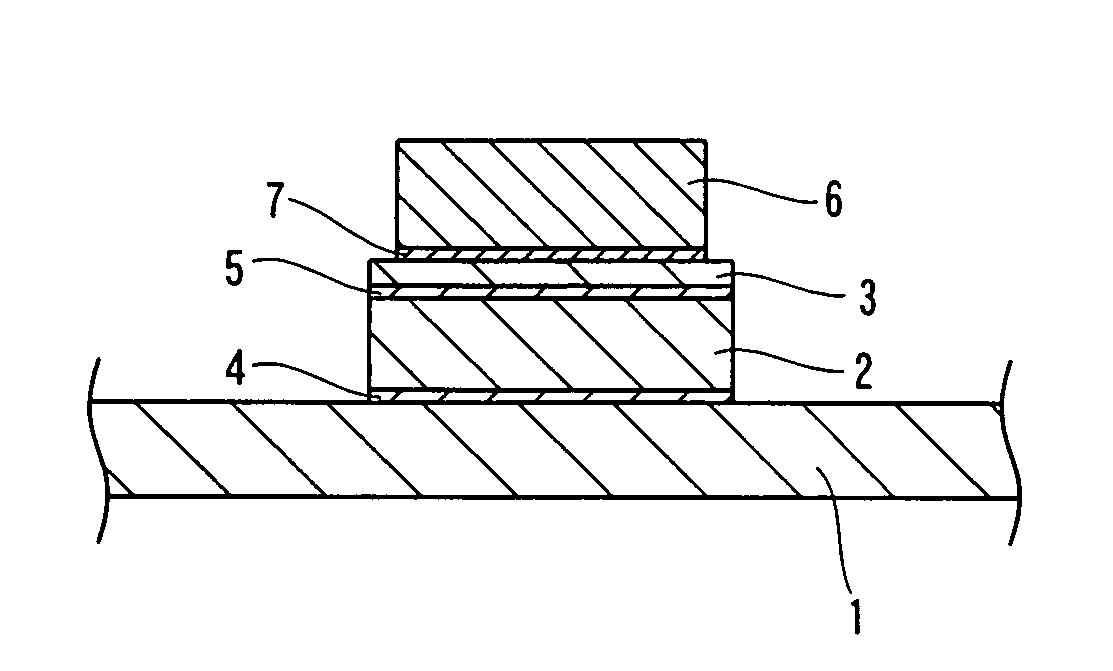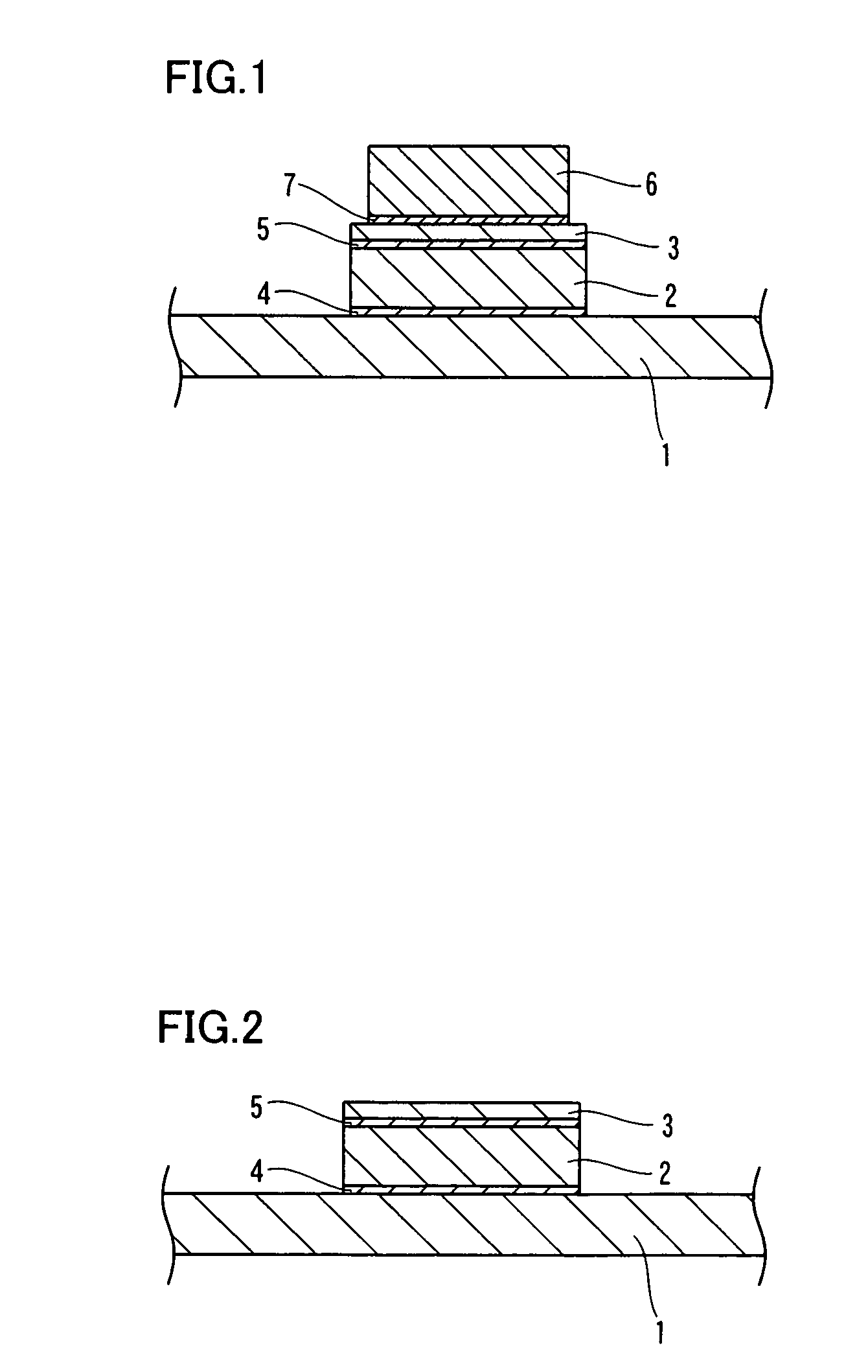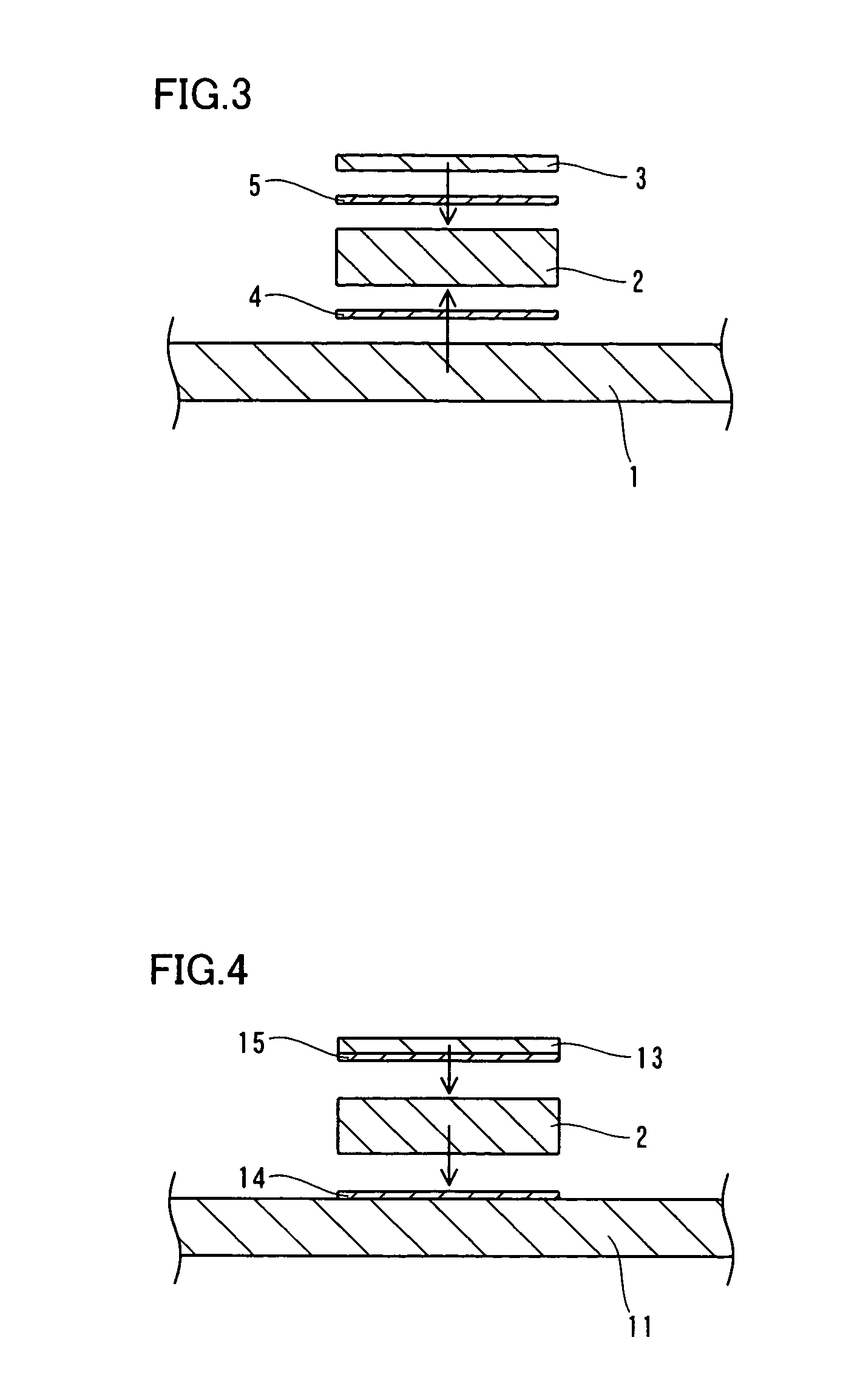Heat sink member and method of manufacturing the same
a technology of sink member and heat sink, which is applied in the direction of manufacturing tools, packaging, and so on, can solve the problems of enlargement of the thermal expansion coefficient of the cu/mo/cu clad member, and easy cracking or chapping of the same, etc., to suppress the enlargement of the thermal expansion coefficient, suppress the lowering of the thermal conductivity, and suppress the cracking and chapping.
- Summary
- Abstract
- Description
- Claims
- Application Information
AI Technical Summary
Benefits of technology
Problems solved by technology
Method used
Image
Examples
first embodiment
[0037]FIG. 1 is a sectional view showing a state of mounting a semiconductor element on a heat sink member according to a first embodiment of the present invention. FIG. 2 is a sectional view showing the heat sink member according to the first embodiment of the present invention. First, the structure of the heat sink member according to the first embodiment of the present invention is described with reference to FIGS. 1 and 2.
[0038]The heat sink member according to the first embodiment of the present invention includes a ply member 1 mainly composed of Cu (copper), a substrate 2 mainly composed of Mo (molybdenum) and another ply member 3 mainly composed of Cu (copper), as shown in FIG. 2. The ply member 1 and the ply member 3 are examples of the “first layer” and the “third layer” in the present invention respectively, and the substrate 2 is an example of the “second layer” in the present invention. The ply member 1, the substrate 2 and the ply member 3 have thicknesses of about 0.1...
second embodiment
[0062]FIGS. 4 to 6 are sectional views for illustrating a method of manufacturing a heat sink member according to a second embodiment of the present invention. In this second embodiment, a method of manufacturing a heat sink member different from the aforementioned first embodiment is described.
[0063]In the method of manufacturing a heat sink member according to this second embodiment, ply members 11 and 13 shown in FIG. 4 are first formed by rolling a member mainly composed of Cu into a thickness of about 0.25 mm to about 7.5 mm and cutting the same into prescribed sizes. At this time, the ply member 13 is formed so that the length thereof is smaller than that of the ply member 11. Further, a member mainly composed of Mo (molybdenum) is formed to have a thickness of about 0.1 mm to about 3.0 mm by sintering. A substrate 2 is formed by cutting this member into a length substantially identical to that of the ply member 13.
[0064]Further, brazing layers 14 and 15 are formed by forming ...
PUM
| Property | Measurement | Unit |
|---|---|---|
| thicknesses | aaaaa | aaaaa |
| thicknesses | aaaaa | aaaaa |
| thickness | aaaaa | aaaaa |
Abstract
Description
Claims
Application Information
 Login to View More
Login to View More - R&D
- Intellectual Property
- Life Sciences
- Materials
- Tech Scout
- Unparalleled Data Quality
- Higher Quality Content
- 60% Fewer Hallucinations
Browse by: Latest US Patents, China's latest patents, Technical Efficacy Thesaurus, Application Domain, Technology Topic, Popular Technical Reports.
© 2025 PatSnap. All rights reserved.Legal|Privacy policy|Modern Slavery Act Transparency Statement|Sitemap|About US| Contact US: help@patsnap.com



